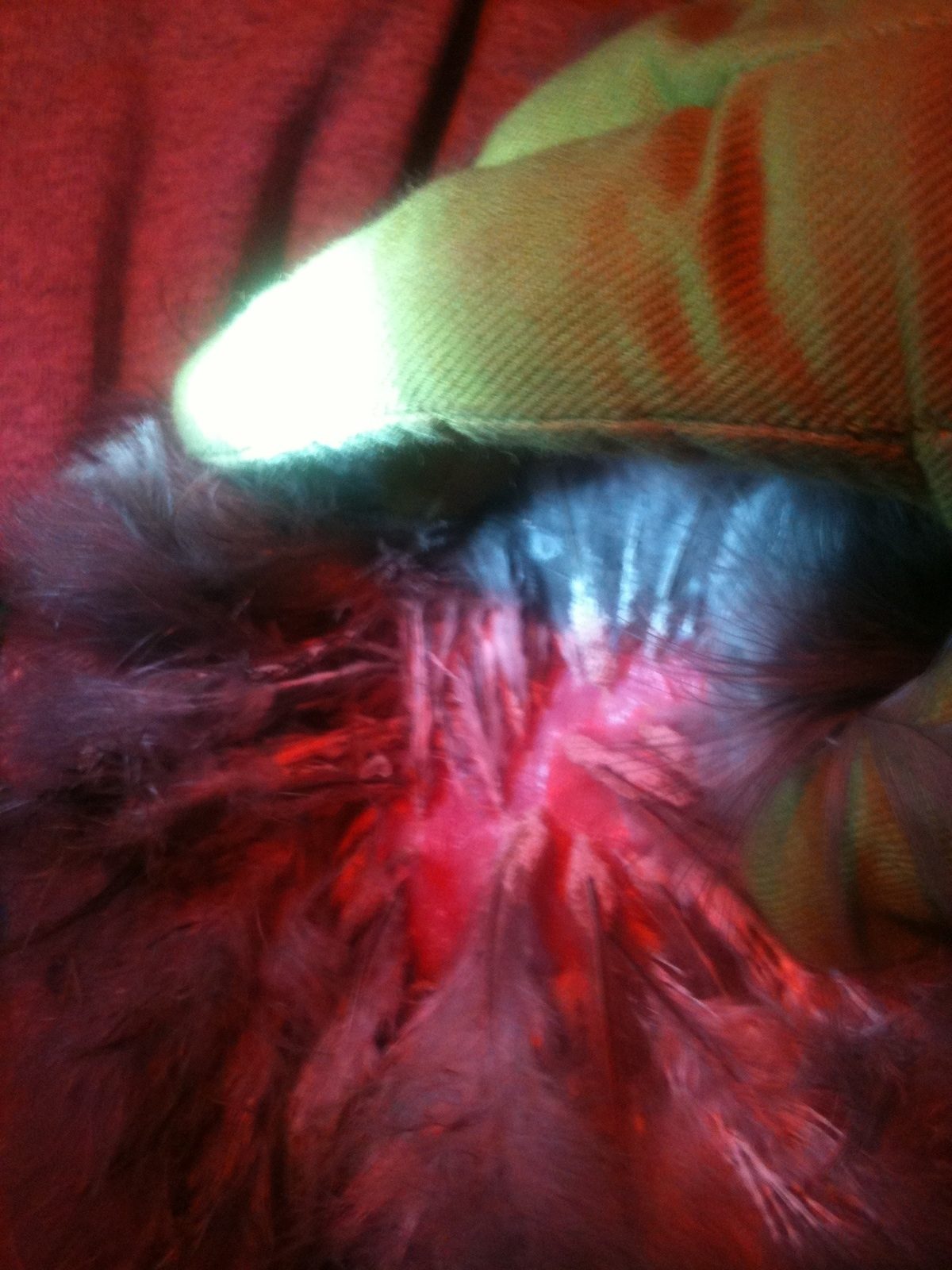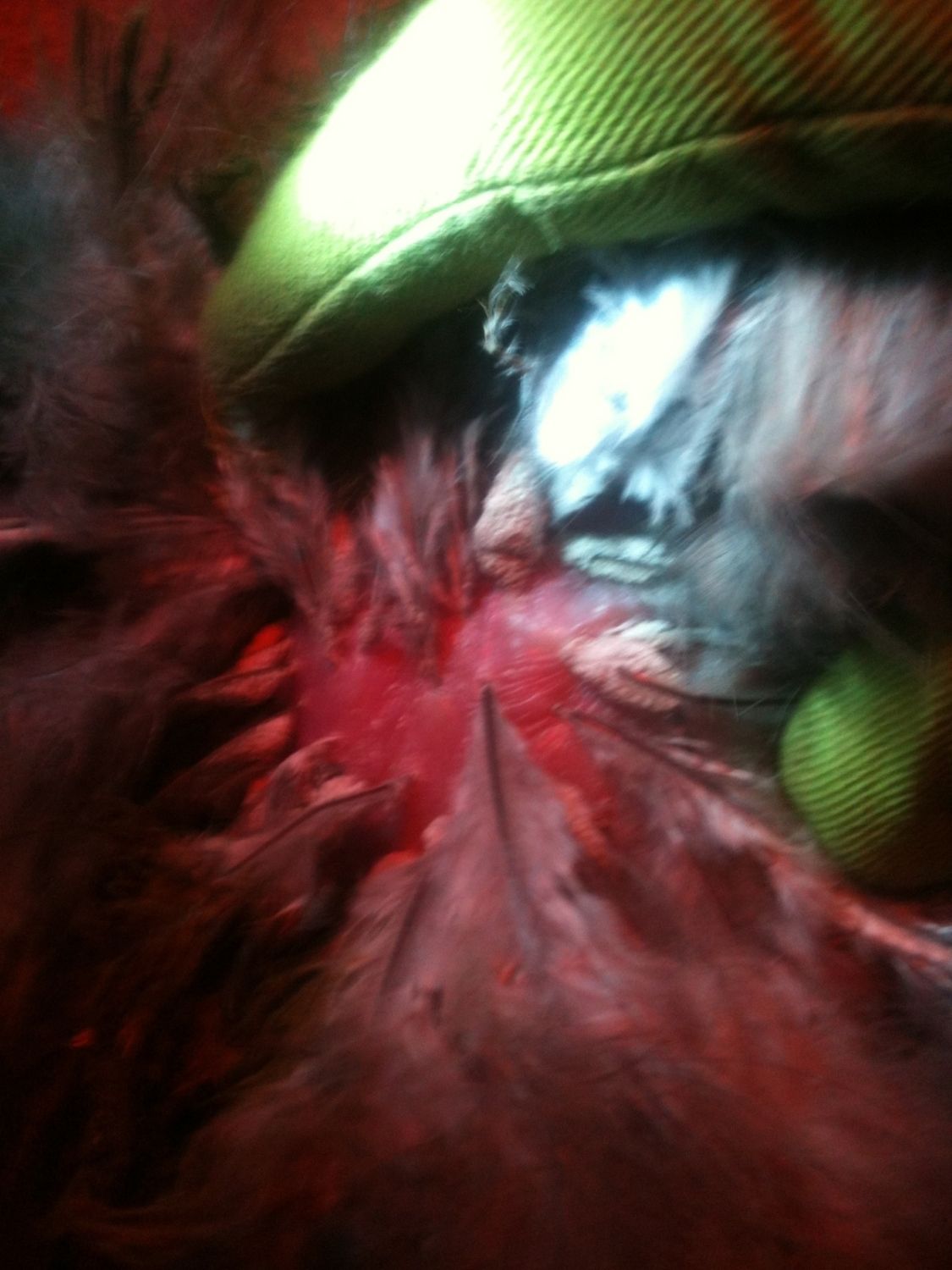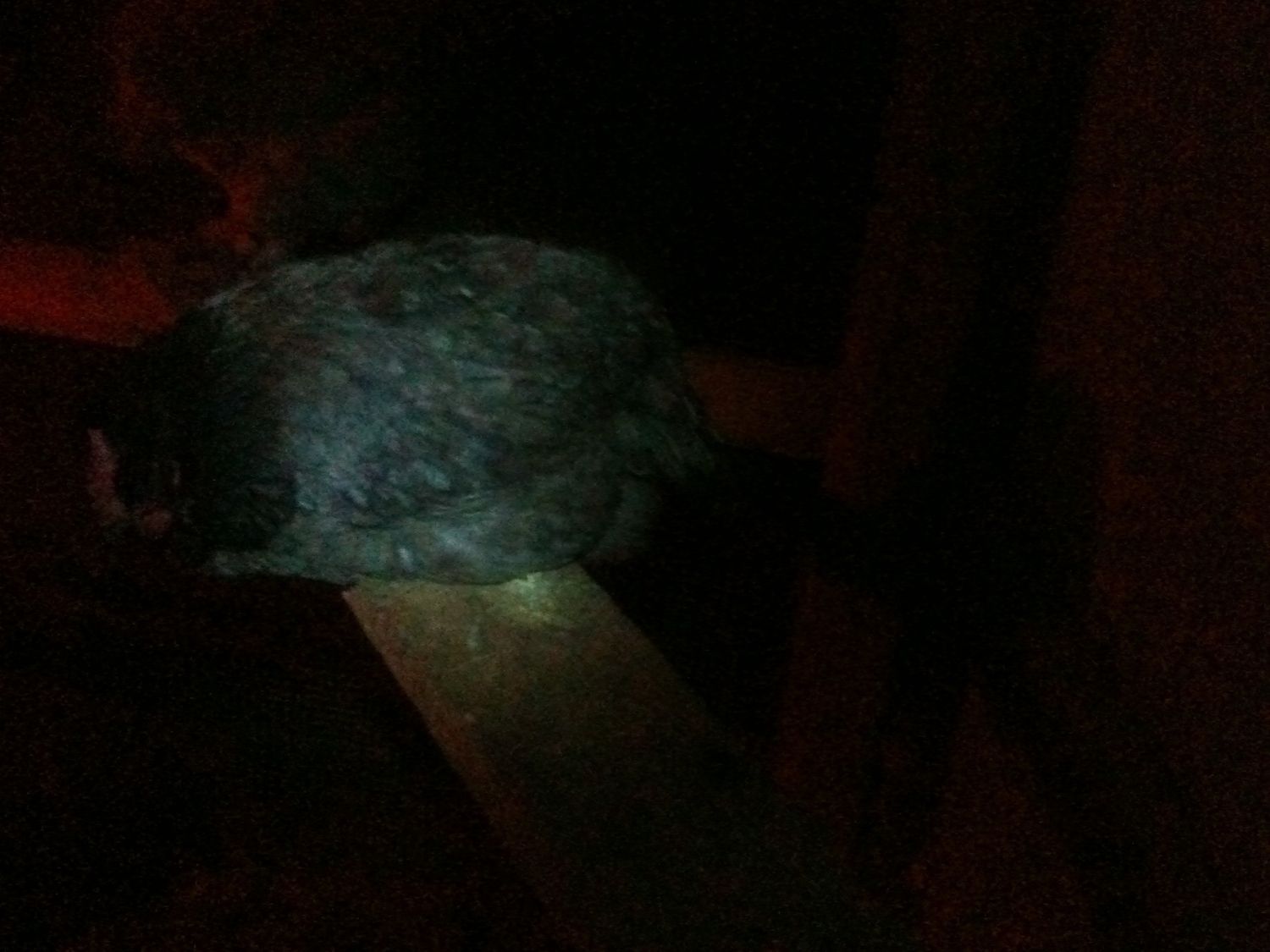Hen has been acting very strange last couple of days. Just sitting around. She walks very funny - likes she's in pain. The area between her back legs and vent looks swollen but upon feeling it - I can't feel anything. If she was egg bound would I feel something hard (like an egg)?. It's not her vent. I also found this stuff on her. Upon examining everyone, all the hens have it on them. It wasn't on them 2 week ago during the show. What is it, where did it come from, and how do I get rid of it? She has it the worst of the bunch, but is the only one acting abnormally. It's like a bunch (hundreds and hundreds) of little dried eggs on each the root of each feather. The third picture is of her just sitting there. She prefers the ground, but even when she's on the ground she is hunched over. The pictures aren't great because by the time I get home, it's dark.










